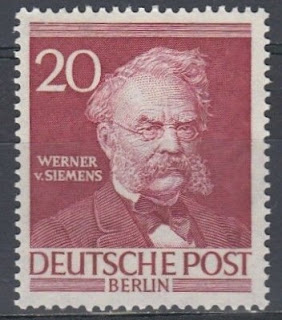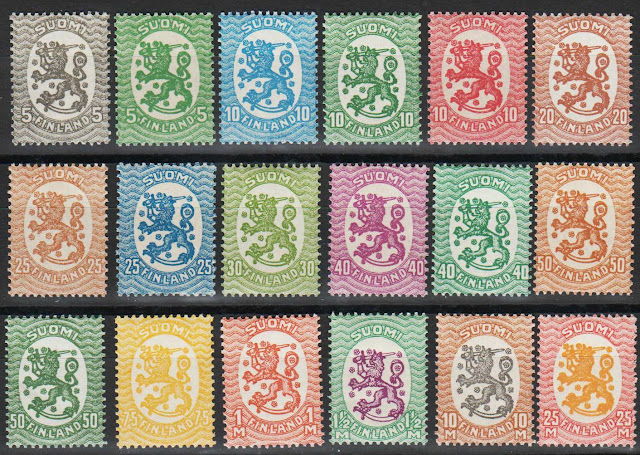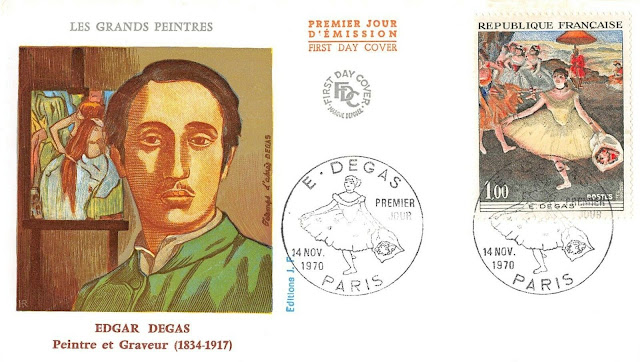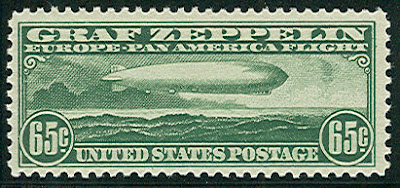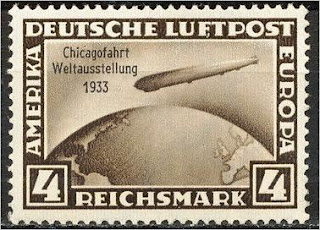Chardin's influence on the art of the modern era was wide-ranging, and has been well-documented. Édouard Manet's half-length Boy Blowing Bubbles and the still lifes of Paul Cézanne are equally indebted to their predecessor. He was one of Henri Matisse's most admired painters; as an art student Matisse made copies of four Chardin paintings in the Louvre. Chaim Soutine's still lifes looked to Chardin for inspiration, as did the paintings of Georges Braque, and later, Giorgio Morandi. In 1999 Lucian Freud painted and etched several copies after The Young Schoolmistress (National Gallery, London).
Stamps from France and a stamp from the United States commemorating Chardin
1792 Born: William II of the Netherlands (d. 1849)
William II (Willem Frederik George Lodewijk, anglicized as William Frederick George Louis; 6 December 1792 – 17 March 1849) was King of the Netherlands, Grand Duke of Luxembourg, and Duke of Limburg.
William II was the son of William I and Wilhelmine of Prussia. When his father, who up to that time ruled as sovereign prince, proclaimed himself king in 1815, he became Prince of Orange as heir apparent of the Kingdom of the Netherlands. With the abdication of his father on 7 October 1840, William II became king. During his reign, the Netherlands became a parliamentary democracy with the new constitution of 1848.
William II was married to Anna Pavlovna of Russia. They had four sons and one daughter. William II died on 17 March 1849 and was succeeded by his son William III.
Dutch stamps from 1913 depicting Willem II
1882 Died: Alfred Escher, Swiss businessman and politician (b. 1819)
Johann Heinrich Alfred Escher vom Glas, known as Alfred Escher (20 February 1819 – 6 December 1882) was a Swiss politician, business leader and railways pioneer. Thanks to his numerous political posts and his significant role in the foundation and management of the Swiss Northeastern Railway, the Swiss Federal Institute of Technology, Credit Suisse, Swiss Life and the Gotthard Railway, Escher had an unmatched influence on Switzerland's political and economic development in the 19th century.
Swiss stamps depicting Alfred Escher
Ernst Werner Siemens (von Siemens from 1888; 13 December 1816 – 6 December 1892) was a German electrical engineer, inventor and industrialist. Siemens's name has been adopted as the SI unit of electrical conductance, the siemens. He was also the founder of the electrical and telecommunications company Siemens.
Ernst Werner Siemens was born in Lenthe, today part of Gehrden, near Hannover, in the Kingdom of Hanover in the German Confederation, the fourth child (of fourteen) of a tenant farmer of the Siemens family, an old family of Goslar, documented since 1384. He was a brother of Carl Heinrich von Siemens and Carl Wilhelm Siemens, sons of Christian Ferdinand Siemens (31 July 1787 – 16 January 1840) and wife Eleonore Deichmann (1792 – 8 July 1839).
After finishing school, Siemens intended to study at the Bauakademie Berlin. However, since his family was highly indebted and thus could not afford to pay the tuition fees, he chose to join the Prussian Military Academy's School of Artillery and Engineering, between the years 1835-1838, instead, where he received his officers training. Siemens was thought of as a good soldier, receiving various medals, and inventing electrically-charged sea mines, which were used to combat a Danish blockade of Kiel.
Upon returning home from war, he chose to work on perfecting technologies that had already been established and eventually became known worldwide for his advances in various technologies. In 1843 he sold the rights to his first invention to Elkington of Birmingham. Siemens invented a telegraph that used a needle to point to the right letter, instead of using Morse code. Based on this invention, he founded the company Telegraphen-Bauanstalt von Siemens & Halske on 1 October 1847, with the company opening a workshop on 12 October.
The company was internationalised soon after its founding. One brother of Werner represented him in England (Sir William Siemens) and another in St. Petersburg, Russia (Carl von Siemens), each earning recognition. Following his industrial career, he was ennobled in 1888, becoming Werner von Siemens. He retired from his company in 1890 and died in 1892 in Berlin.
The company, reorganized as Siemens & Halske AG, Siemens-Schuckertwerke and – since 1966 – Siemens AG was later led by his brother Carl, his sons Arnold, Wilhelm, and Carl Friedrich, his grandsons Hermann and Ernst and his great-grandson Peter von Siemens. Siemens AG is one of the largest electrotechnological firms in the world. The von Siemens family still owns 6% of the company shares (as of 2013) and holds a seat on the supervisory board, being the largest shareholder.
Apart from the pointer telegraph Siemens made several contributions to the development of electrical engineering and is therefore known as the founding father of the discipline in Germany. He built the world's first electric elevator in 1880. His company produced the tubes with which Wilhelm Conrad Röntgen investigated x-rays. He claimed invention of the dynamo although others invented it earlier. On 14 December 1877 he received German patent No. 2355 for an electromechanical "dynamic" or moving-coil transducer, which was adapted by A. L. Thuras and E. C. Wente for the Bell System in the late 1920s for use as a loudspeaker. Wente's adaptation was issued US patent 1,707,545 in 1929. Siemens is also the father of the trolleybus which he initially tried and tested with his "Elektromote" on 29 April 1882.
Stamps from Germany and Berlin depicting Siemens
1917 – Finland declares independence from Soviet Russia.
The Finnish Declaration of Independence (Finnish: Suomen itsenäisyysjulistus; Swedish: Finlands självständighetsförklaring; Russian: Провозглашение независимости Финляндии) was adopted by the Parliament of Finland on 6 December 1917. It declared Finland an independent nation, among nations ending its autonomy within Russia as its Grand Duchy of Finland, with reference to a simultaneously delivered bill to the Diet to make Finland an independent republic instead.
On 2 November 1917, the Bolsheviks declared a general right of self-determination, including the right of complete secession, "for the Peoples of Russia". On the same day the Finnish Parliament issued a declaration by which it assumed, pro tempore, all powers of the Sovereign in Finland.
The old Instrument of Government was however no longer deemed suitable. Leading circles had long held monarchism and hereditary nobility to be antiquated, and advocated a republican constitution for Finland.
The Senate of Finland, the government that the Parliament had appointed in November, drafted a Declaration of Independence and a proposal for a new republican Instrument of Government. Chairman of the Senate (a.k.a. Prime minister) Pehr Evind Svinhufvud read the Declaration to the Parliament on 4 December. The Declaration of Independence was technically given the form of a preamble of the proposition, and was intended to be agreed by the Parliament, which adopted the Declaration on 6 December.
Declaring the independence was only part of the long process leading to the independence of Finland. The declaration is celebrated as the Independence Day in Finland.







